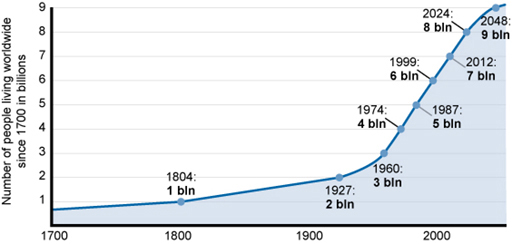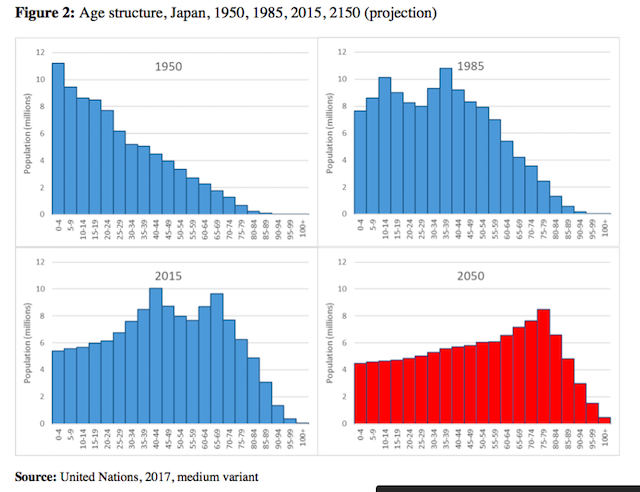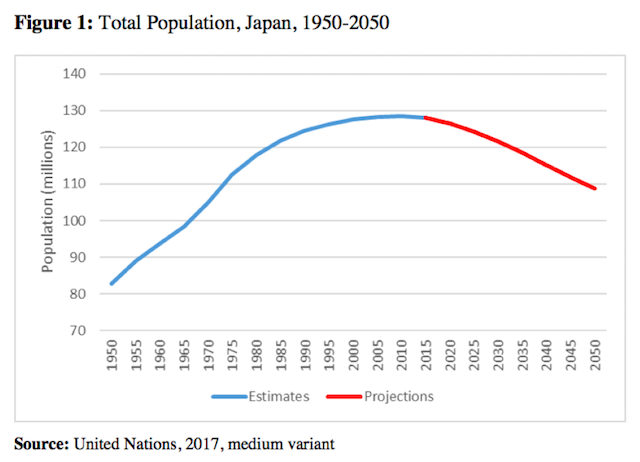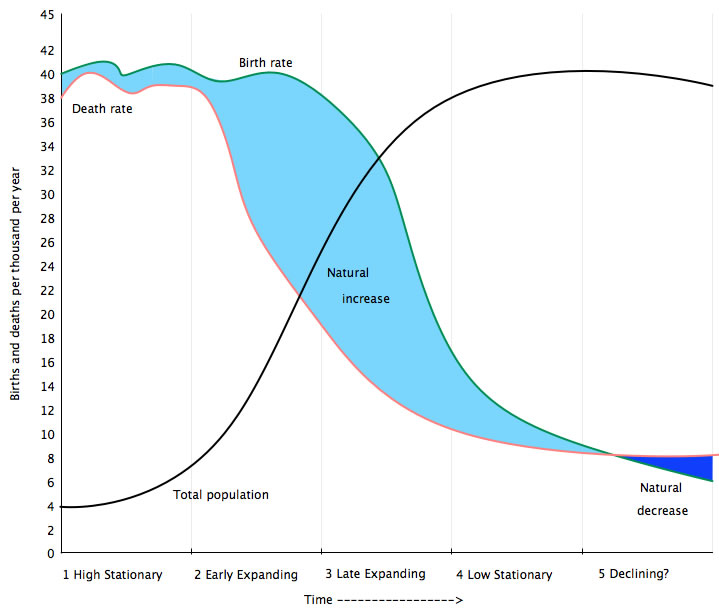Describe How Global Fertility Rates and Populations Are Changing
This steadily decreasing fertility rate spells decreasing populations in the US. Explain these changes from stage to stage referring to the increase in economic development over time.

What Factors Affect The Total Fertility Rate Or Tfr Population Education
Some countries are below the replacement rate of about two children per woman.

. Declining fertility rates are a trend around the world. Chinas defunct one-child policy contributed to the countrys current fertility rate of 162. Population numbers change over time influenced by births deaths and migration into or out of the area.
Industrial population growth slows as both birth and death rates drop because of improved food production health. At the end of 2004 the majority of the worlds population is believed to live in countries or regions below-replacement fertility and the earlier. World ertility atterns 2015 3 Global fertility is now 25 children per woman According to the results of the 2015 Revision of World Population Prospects total fertility is now 25 children per.
The ageing of the worlds populations is the result of the continued decline in fertility rates and increased life expectancy. Global population levels having grown slowly for most of human history are now rising. Global population forecasts appear to depend primarily on two key issues.
In the United States the Centers for Disease Control and Prevention CDC points out that the US. This demographic change has resulted in increasing numbers and proportions of people who are over 60. Four stages of demographic transition.
But while women overall are having fewer children than in the past total fertility rates still vary greatly among countries. It occurs because a large number of young people will reach maturity and therefore the rate of births will continue to exceed the number deaths even with falling overall fertility. Describe the 4-5 stages of the DTM with reference to birth rates death rates population change.
The total fertility rate for the United States in 2019 was calculated at 17 and the total fertility rate for the world was 24 down from 28 in 2002 and 50 in 1965. Transitional population grows rapidly because birth rates are high and death rates drop because of improved food production and health. Population numbers change over time influenced by births deaths and migration into or out of the area.
Fertility rates in Japan France UK and USA offer a good contrast to the Sub Saharan nations. Population momentum This explains why population growth can continue even when birth ratesfertility rates fall in populations with a youthful structure. United Nations Population Program 2011.
Vhat is the idea of ecological services. There are a growing number of countries whose fertility rates have fallen below replacement value around 21. It can also be inferred from the graph that fertility rates in the developed nations are far lower than the fertility rates in poor languishing countries.
ACTICE QUIZ Describe how global fertility rates and populations are changing see fig. Distinguish between a hypothesis and a theory. Parallel to these two disasters another major global change emerged in the newsone that will require more and more of our attention in the coming yearspopulation transition.
Bad news and good news. Globally populations continue to rise a but our rate of growth has plummeted b. Describe how global fertility rates and populations are changing see fig.
Some countries below ZPG Fertility is socially constructed not taken for granted Population does not grow uncontrollably but rather stabilizes at a slow growth rate as birth and death rates fall However absolute population growth is still large ca. The global population is at a turning point. Fertility rate has been falling steadily since 2008 and has never returned to its.
Canada granted permanent-resident status to 180000 applicants in 2020 far short of the target of. But with the population increasing over periods of time it has come to my attention that it has been stabled due to the face where some poor countries democracy social security and. Preindustrial population grows very slowly because of a high birth rate and a high death rate.
Evaluate the DTM as a model. Population Explodes after the Industrial Revolution Population Density Population Growth over Time and Space World population growth is slowing Still adding ca. As a result the first time in history when there will be more older people than younger people is rapidly approaching.
In 2020 Australia recorded its first population decline since World War I due to stricter COVID-related border controls. Up to 24 cash back Using this video and the slides. 80 million per year Most in developing countries Some countries are losing population Russia E.
80 million per annum due to the large base current 6 billion Total future population depends on fertility rate trends in less developed. Global population levels having grown slowly for most of human history are now rising. Since 1950 the total global fertility rate has dropped by half according to The Lancets comprehensive Global Burden of Disease Study.
A decline in fertility is just one way the pandemic is suppressing population growth in many developed nations. Countries with low female literacy like Afghanistan Niger and Senegal have higher fertility rates. Apply a country or society that you think currently fits into each of the stages.
Fertility rates and birth rates are decreasing globally. This implies that countries at. Describe the steps in the scientific method.
As we can see from these graphs the global fertility rates are constantly declining in most countries but have resources available such as safe water supplies vaccines and food supply. Today the total fertility rate or TFR is half of what it was five decades ago. The global total fertility rate or average number of children a woman is estimated to have in her life has been falling since the 1960s.
Europe coming in Japan Forces affecting population change P BR DR I O or P NGR NMR Fertility. The pace of fertility decline in sub-Saharan Africa and what happens to countries when fertility levels drop below a total fertility rate TFR of 21 traditionally considered the minimum rate necessary for generational replacement of the population the replacement level.

The Human Made Landscape Students Will Use The Human Land Use Overlay And Timeline On Www Worldpo Free Teaching Resources Free Lesson Plans Teaching Resources

Study Session 2 Population Growth View As Single Page

Population Momentum If The Number Of Children Is Not Growing Why Is The Population Still Increasing Our World In Data

Half The World S Population Is Reaching Below Replacement Fertility Institute For Family Studies

Population Future Students Interpret A Graph Showing Global Population Projections Through 2100 Then Cre Bar Graphs Free Teaching Resources Free Lesson Plans

Development In Motion Using The Trendalyzer Program From Www Gapminder Org Students Construct Free Teaching Resources Free Lesson Plans Teaching Resources

How The World S Populations Are Changing In One Map Map Ap Human Geography World

1 Populations In Transition The Geographer Online

World Population Evolution Historic Growth And Causes Iberdrola

Half The World S Population Is Reaching Below Replacement Fertility Institute For Family Studies

Lesson Plans On Human Population And Demographic Studies Prb
Population Trends 1950 2100 Globally And Within Europe European Environment Agency

Lesson Plans On Human Population And Demographic Studies Prb

1 Populations In Transition The Geographer Online

Lesson Plans On Human Population And Demographic Studies Prb

Study Session 2 Population Growth View As Single Page

What Is Population Momentum The Reason Populations Keep Growing

Comments
Post a Comment